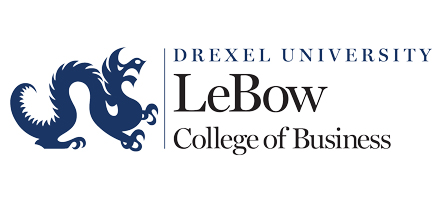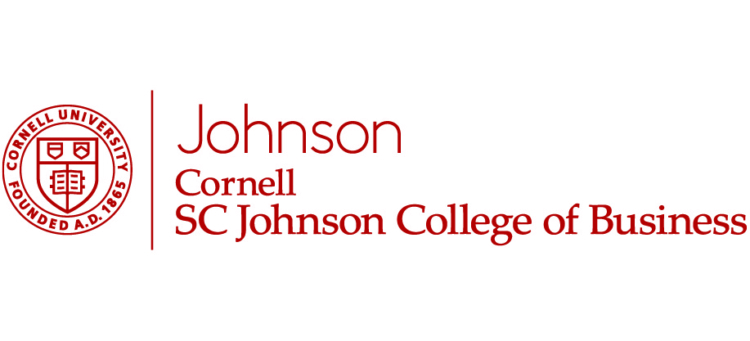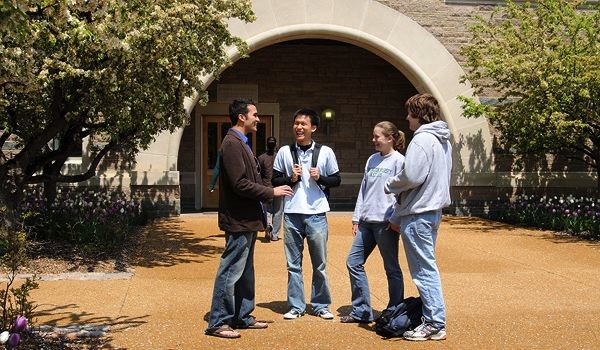Washington University’s Olin School of Business emerged the big winner today (Oct. 21) in The Financial Times’ annual ranking of the best Executive MBA programs. With an overall rank of sixth, it was the highest ranked standalone EMBA program on the FT’s list. Rounding out the top five standalone programs are the University of Pennsylvania’s Wharton School, Duke University’s Fuqua School, the University of Chicago’s Booth School of Business, and CEIBS in China.
The Olin program moved up three spaces to surpass Wharton and CEIBS. According to the British newspaper, graduates of Olin’s EMBA program were making on average $263,291 three years after graduation, a 61% increase from their pre-EMBA pay. The catch? It was Olin’s EMBA program in China at Fudan University–and not its program in St. Louis where the school is based.
Northwestern University’s joint EMBA program with Hong Kong University of Science and Technology was again ranked first overall. It was the highest ranked of five joint programs that topped the list. The strong showing by joint programs on the FT list is largely a function of the newspaper’s methodology which heavily weights and then “adjusts” the salaries of survey alumni in ways that distort compensation. The adjustment to “purchasing power parity” tends to favor programs that enroll a larger percentage of sponsored students from emerging economies. The FT said the average salary of a graduate of the Kellogg/Hong Kong UST program currently makes $416,806 a year, a number adjusted by the FT.
The No. 2 school this year is the joint program between INSEAD and Tsinghua University which brings in a lot of students from China and Singapore and the United Arab Emirates. That program jumped two spots from the previous year. The joint EMBA run by Columbia University and London Business School was ranked third. Trium, the innovative partnership among New York University’s Stern School, HEC Paris and the London School of Economics, is fourth, while UCLA’s EMBA with the National University of Singapore was fifth.
FIVE U.S. SCHOOLS DROP IN DOUBLE DIGITS ON THE RANKING
Of the seven schools on the list that fell in double digits, five were U.S. EMBA programs. The University of Texas-Dallas EMBA plummeted 21 places to finish 87 from 66th last year. The University of Minnesota’s Carlson School EMBA fell 17 places to a rank of 97th from 80th in 2012. The University of Rochester’s Simon School dropped 16 spots to 96th from 80th, while Boston University’s School of Management fell 15 places to rank 81st from 66th.
Oddly enough, of the seven schools that rose in double digits, only one was based in the U.S. Georgia State University’s EMBA program moved up 12 places to a rank of 51 from 63rd last year.
It’s not immediately clear why these changes occurred, though the FT said there were “minor changes to the calculation of international diversity measures for 2013. In addition to the percentage of schools’ students and faculty that are international – the figures published – the composition of these groups by individual citizenship informs a diversity-measuring score that feeds into the calculation.”
SALARY COUNTS FOR THE LARGEST SINGLE PART OF THE RANKING’S METHODOLOGY
The FT’s methodology uses 16 separate metrics to rank the school’s EMBA programs. Five of these measures are taken from a survey of alumni, ten of them are school reported, and the remaining metric is a count of articles in 45 journals by the newspaper. The FT said that 136 programs participated in its ranking this year including 17 offered jointly by more than one school.Some 5,550 graduates completed its alumni survey this year, a response rate of 54%.
The alumni surveys account for the most heavily weighted portion of the methodology, some 55% of the ranking. Despite the use of 16 metrics, salary–current and the increase from pre-EMBA pay to three year out grads–accounts for a whopping 40% of the ranking. Current salary alone–adjusted by the FT to weed out grads in non-profit and public sector and converted into U.S. dollars using purchasing parity rates–makes up a full 20% of this ranking. Programs in emerging economies tend to do better when the adjustment is made because of the level of poverty in those countries. Another factor in this ranking is that many of the joint programs at the top tend to enroll a larger number of sponsored executives who are being selected by their companies as up-and-comers who most likely will experience more rapid salary increases.
All told, The Financial Times ranked 100 EMBA programs, with two schools tied for 99th place: the University of Houston’s Bauer School and Stockholm School of Economics. A dozen of the EMBA programs that were not on the list last year made it onto the 2013 list, including No. 13 Nanyang Business School in Singapore, No. 31 Shanghai Jiao Tong University in China, and No. 58 the University of Strathclyde Business School.
DRAMATIC CHANGES IN YEAR-OVER-YEAR RANKS UNDERMINE THE CREDIBILITY OF THE SURVEY
Although the FT attaches a numerical rank on each EMBA program it ranks, the British newspaper points out that “the pattern of clustering among the schools is equally significant.” Some 245 points separate Kellogg/Hong Kong UST Business School at the top, from the school ranked number 100, discloses the FT. “The first 18 business schools, from Kellogg/HKUST Business School to Kellogg/WHU Beisheim, form the first tier of schools,” The Financial Times said. “The second tier is headed by IMD, about 90 points above National Sun Yat-sen University at the bottom of this group. HHL Leipzig Graduate School of Management heads the third tier.”
Not accounting for the EMBA programs that dropped completely off the list, some 24 different programs experienced double-digit changes in their ranks, including the newcomer programs. That level of volatility in a single year greatly undermines the credibility of this list because it’s not possible that year-over-year changes in a program would account for those types of dramatic swings. Instead, the lack of consistency in the ranking suggests that the differences between and among ranked schools is so small as to be statistically meaningless so minute changes or errors can result in massive changes in numerical rank.
The Best EMBA Programs Ranked By The Financial Times In 2013
| School | 2012 Rank | Change |
| 1. Kellogg/Hong Kong UST | 1 | —— |
| 2. Tsinghua/INSEAD | 4 | +2 |
| 3. Columbia/London | 2 | -1 |
| 4. Trium/HEC Paris/LSE/NYU | 3 | -1 |
| 5. UCLA/National U. of Singapore | 5 | —— |
| 6. Washington University (Olin) | 9 | +3 |
| 7. Pennsylvania (Wharton) | 8 | +1 |
| 8 Duke University (Fuqua) | 16 | +8 |
| 9. University of Chicago (Booth) | 10 | +1 |
| 10. CEIBS | 7 | -3 |
| 11. INSEAD | 6 | -5 |
| 12. IESE Business School | 14 | +2 |
| 13. Nanyang Business School | —– | —– |
| 13. CUHK Business School | 17 | +4 |
| 15. Georgetown/ESADE | 19 | +4 |
| 15. IE Business School | 12 | -3 |
| 17. National University of Singapore | 26 | +9 |
| 18. Kellogg/WHU | 18 | —— |
| 19. IMD | 20 | +1 |
| 20. London Business School | 15 | -5 |
| 21. Warwick Business School | 24 | +3 |
| 22. Korea University | 12 | -10 |
| 23. University of Oxford (Said) | 38 | +15 |
| 24. Northwestern (Kellogg) | 23 | -1 |
| 25. ESCP Europe | 21 | -4 |
Source: The Financial Times 2013 Global Executive MBA Ranking





